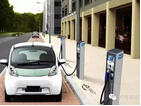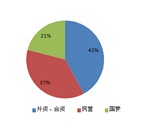China's new energy automobile industry is the focus of national industrial policy development, and is also a key investment area for national R&D expenditures. The country's “optimizing” policy will increase the degree of industry concentration in the future. In May 2018, the National Development and Reform Commission issued the "Regulations on the Investment Management of the Automotive Industry (Draft for Soliciting Opinions)", requiring companies that invest in new energy vehicles to be required to have social capital and strong technical capabilities to build new independent electric vehicles. Qualification requirements are clearly defined.
The single investment amount of new energy vehicles will double, and funds will flow to high-quality projects. In 2018, the subsidy policy gradually retreated. From the perspective of project investment, the capital market of new energy vehicles is becoming calmer, while the amount of investment has decreased, and the number of projects has been greatly reduced, and capital inflows have become more quality projects.
The output of new energy vehicles has not been affected by the reduction in investment. From January to April of 2018, a total of 228,800 new energy vehicles were produced, a cumulative increase of 178% year-on-year; of which, the cumulative production of new energy passenger vehicles increased by 171% year-on-year; the cumulative number of passenger cars increased by 320% year-on-year; the cumulative number of special vehicles increased by 200% year-on-year. .

The lithium battery investment increased threefold over the same period. With the overall investment in the new energy automotive industry declining, the investment in lithium materials projects has increased by a factor of three. The increase is mainly due to project investment in anode and diaphragm materials. From January to May in 2018, the total investment of cathode materials was 18.6 billion yuan, accounting for 17.48% of the total investment in the entire industry chain; the total investment in membrane materials was 6.4 billion yuan, accounting for 4.28%.
In February 2018, the Ministry of Finance issued the "Circular on Adjusting and Perfecting the Financial Subsidy Policy for the Popularization and Application of New Energy Vehicles", which states that the cruising range of a pure electric passenger vehicle is not less than 150 km, and the energy density is not less than 105 Wh/kg. The new policy requires batteries with high energy density, making most companies turn to ternary materials. From January to April in 2018, the output of new energy vehicles reached 228,000 units, a year-on-year increase of 178%. The downstream demand for lithium batteries was strong, which will drive the demand for ternary cathode materials to continue to rise.
Project investment area distribution. From the perspective of the distribution of investment areas, 42% of the investment in the new energy auto industry comes from the northwest region, and investment projects in the east China where the new energy automobile industry chain is relatively concentrated remain stable. In 2018, the investment in new projects so far has reached 31.2 billion yuan.
From the perspective of investors, Japan and South Korea's battery companies have made frequent investment moves in China in the past six months. From January to May of 2018, Japan and South Korea's power battery companies invested an additional 2.5 billion yuan in China, accounting for about 10% of the new investment in lithium materials.
With the adjustment of the national new energy automobile industry policy, the investment in the new energy automobile industry in China in the first half of 2018 will be more rational and the industry concentration will increase. With the new energy vehicle market driven, it is expected that the investment in lithium battery materials will continue to grow in the future.
















 RCCN WeChat QrCode
RCCN WeChat QrCode Mobile WebSite
Mobile WebSite







